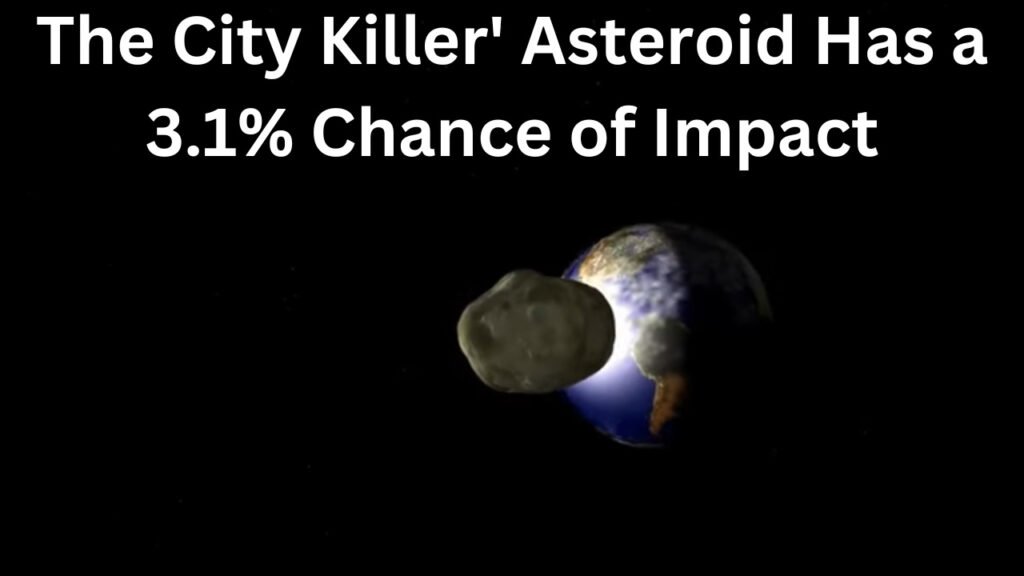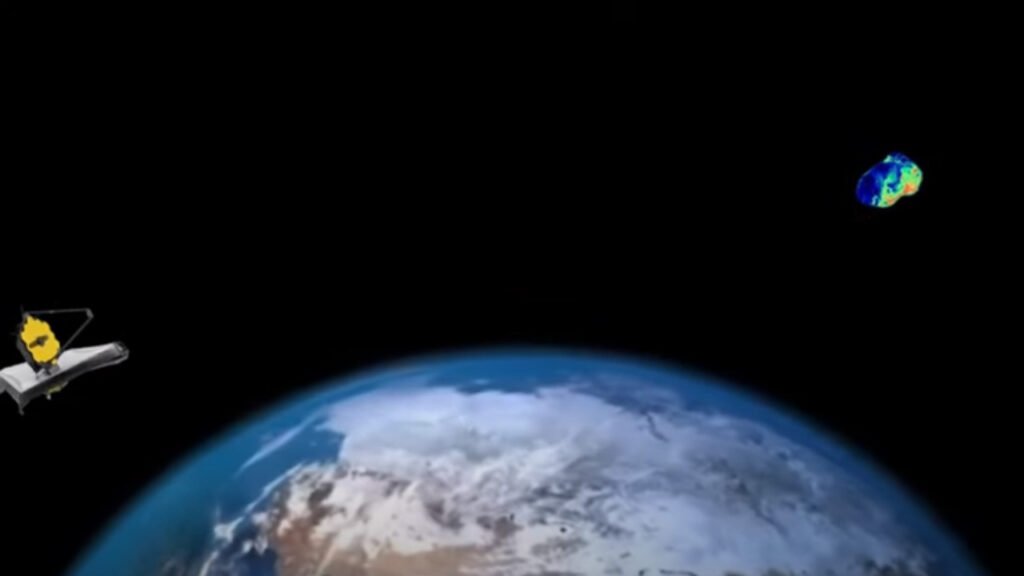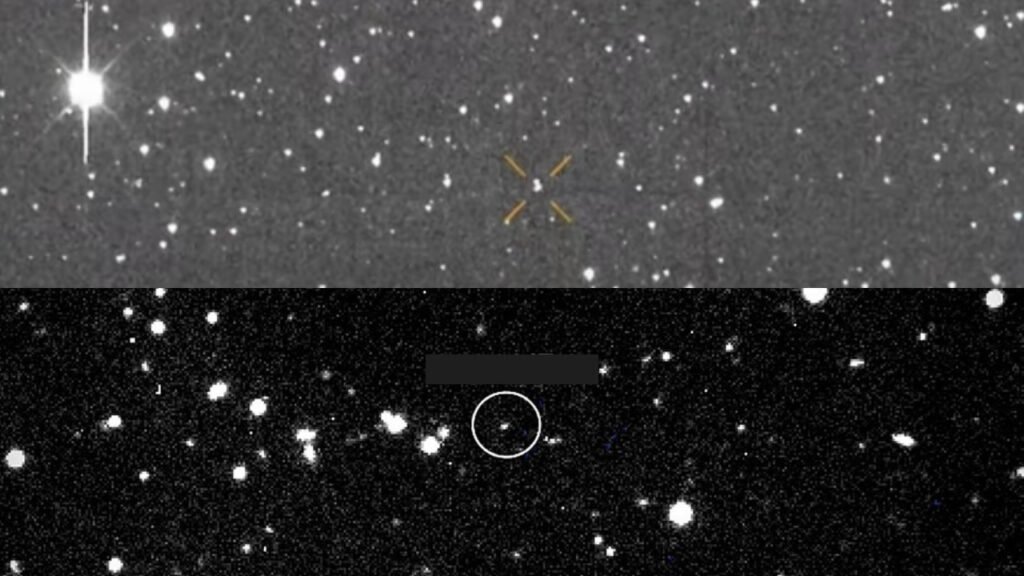In a shocking revelation, NASA has issued a warning about a potentially catastrophic asteroid that has a 3.1% chance of impacting Earth. Dubbed the ‘City Killer’, this space rock has sparked global discussions about planetary defence and the potential consequences of such an event. But how real is this threat? Should we be genuinely concerned about an asteroid impact in 2025? Let’s explore the details, expert opinions, and what NASA is doing to mitigate the risks.
Table of Contents
Understanding the ‘City Killer’ Asteroid
When NASA warns about an asteroid with a 3.1% chance of impact, it naturally raises alarms. The ‘City Killer’ asteroid, officially designated 2025 CX1, is a Near-Earth Object (NEO) measuring 250 to 300 metres in diameter—large enough to cause significant destruction if it were to collide with Earth.
What Does a 3.1% Chance Really Mean?
While a 3.1% probability might sound small, in astronomical terms, it is one of the highest probabilities ever recorded for a potential impact. Most space rocks pass Earth at safe distances, but when NASA warns about a ‘City Killer’ asteroid with such a chance, even experts take it seriously.
According to NASA’s Jet Propulsion Laboratory (JPL), this probability is based on initial calculations and could change as more data is gathered. However, even a low-percentage chance warrants detailed tracking and potential countermeasures.
Potential Impact Scenarios
If NASA’s warning about the ‘City Killer’ asteroid materialises, the consequences would be severe. Scientists estimate that an impact from an asteroid of this size could:
- Flatten an entire city, similar to the Tunguska event of 1908, which destroyed 2,000 square kilometres of forest in Siberia.
- Cause a blast equivalent to multiple nuclear bombs, leading to shockwaves, fires, and destruction.
- Trigger regional climate changes, depending on where the asteroid lands.
- If it hits an ocean, it could generate tsunamis with devastating coastal impacts.
While NASA warns about the ‘City Killer’ asteroid, it is crucial to remember that Earth has experienced asteroid impacts before. The Chicxulub impact, which wiped out the dinosaurs 66 million years ago, is the most famous example. However, city-destroying asteroids are relatively rare.

How is NASA Tracking the ‘City Killer’ Asteroid?
NASA has been closely monitoring 2025 CX1 using a combination of ground-based telescopes, space observatories, and radar technology. The agency’s Near-Earth Object Observations (NEOO) Program tracks thousands of asteroids, including potentially hazardous ones like this.
The main tracking methods include:
- Pan-STARRS (Panoramic Survey Telescope and Rapid Response System) – Detects fast-moving objects in space.
- ATLAS (Asteroid Terrestrial-impact Last Alert System) – Provides early warnings for potential impacts.
- Goldstone Radar – Measures an asteroid’s trajectory with high precision.
When NASA warns about a ‘City Killer’ asteroid with a 3.1% chance of impact, it means these systems have identified a real, albeit small, possibility of collision. Future observations will refine the risk assessment.
Can We Stop an Asteroid Impact?
If the risk of impact increases, NASA and other space agencies have several planetary defence strategies that could be deployed.
1. Kinetic Impactor Method
NASA successfully tested this method in 2022 with the Double Asteroid Redirection Test (DART) mission, which altered the path of an asteroid by crashing a spacecraft into it. If NASA warns that the ‘City Killer’ asteroid is on a collision course, a similar approach could be attempted.
2. Gravity Tractor
This method involves positioning a spacecraft near an asteroid to use gravitational pull to slowly change its trajectory over time. It requires early detection but is a viable long-term solution.
3. Nuclear Deflection
In extreme cases, a nuclear explosion could be used to push the asteroid off its path. While this is controversial due to risks of fragmentation, it remains a last-resort option.
4. Evacuation and Disaster Preparedness
If NASA confirms that the ‘City Killer’ asteroid will impact a populated area, governments would implement mass evacuation plans similar to hurricane preparedness. However, this would depend on how much warning time is available.

Public Reactions and Government Responses
With NASA warning about the ‘City Killer’ asteroid, governments worldwide are taking precautionary measures. The United States, European Space Agency (ESA), and China have all strengthened their asteroid monitoring programs.
Public reaction has been mixed—while some people fear a potential doomsday scenario, others believe the low probability means there’s no need to worry. Social media has been flooded with discussions, conspiracy theories, and debates about how prepared humanity really is for such an event.
Has NASA Warned About ‘City Killer’ Asteroids Before?
Yes, NASA has previously warned about potentially hazardous asteroids. Some notable examples include:
- Asteroid 2006 QV89 – Initially had a 1 in 7,000 chance of impact in 2019 but later passed Earth safely.
- Apophis (99942) – Was once considered a serious threat for 2029 but was later ruled out as a hazard.
- 2019 OK – A ‘City Killer’ asteroid that passed only 73,000 km from Earth, giving scientists minimal warning.
In each case, improved tracking helped rule out impact risks, and the same could happen with 2025 CX1.
What Happens Next?
NASA and other space agencies will continue to monitor the ‘City Killer’ asteroid. Over the next few months, astronomers will refine trajectory predictions, and any changes in impact probability will be shared with the public.
Key Dates to Watch
- April 2025 – NASA will release an updated risk assessment.
- July 2025 – Possible emergency response plans, if necessary.
- October 2025 – Expected closest approach (impact risk assessment crucial).

Final Thoughts: Should We Be Concerned?
The short answer is: Not yet, but we should stay informed. While a 3.1% chance of impact is significant, it also means there is a 96.9% chance the asteroid will miss Earth.
When NASA warns about a ‘City Killer’ asteroid, it’s a reminder of why planetary defence is crucial. The good news is that scientists are better prepared than ever before, and multiple defence strategies exist to mitigate risks.
For now, the best approach is to stay updated with official sources like NASA, ESA, and JPL. If new data changes the situation, authorities will take action. Until then, it’s an opportunity to learn more about space, asteroids, and the importance of planetary protection.
What are your thoughts? Do you think humanity is prepared for a ‘City Killer’ asteroid? Let us know in the comments!
